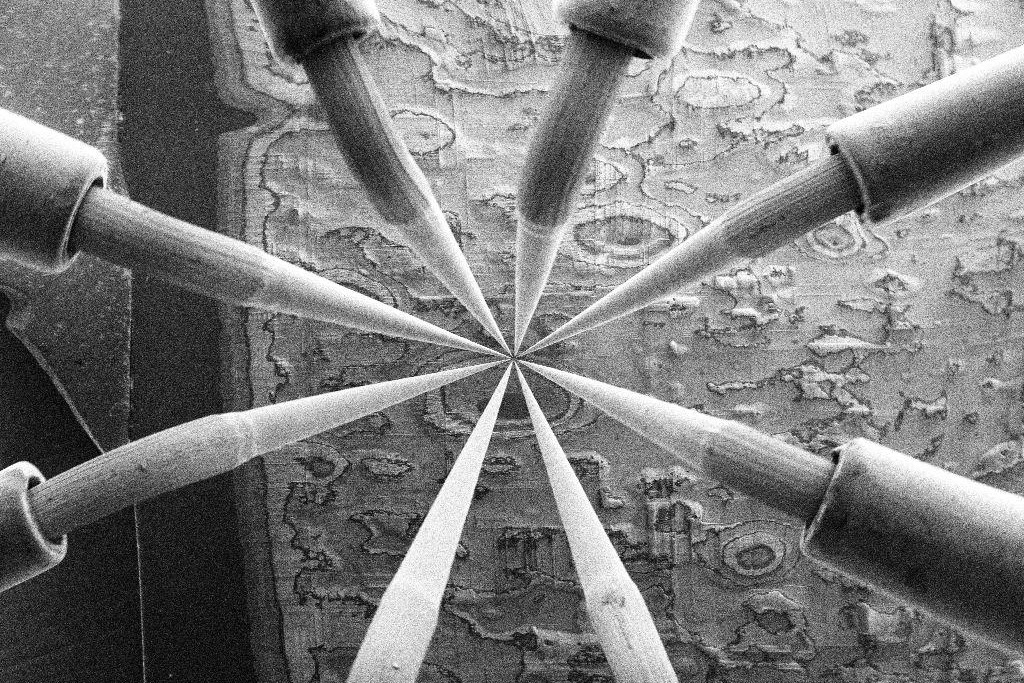
“This work is really exciting because there are so many different parameters we could optimize to allow this method to work across many different cell types and cargos. It’s a very versatile platform,” said co-author Nabiha Saklayen.
“It’s great to see how the tools of physics can greatly advance other fields, especially when it may enable new therapies for previously difficult to treat diseases," said study lead author Eric Mazur.
The Office of Technology Development at Harvard University has already filed patent applications for the new method and is contemplating on opportunities for commercialization.
Improving on a previous study
The new method is based on a gold, pyramid-shaped nanoparticle developed in 2015. This nanoparticle, created by the same researchers, made use of a high-powered laser to stimulate electrons and produce localized surface plasmons. This process activated the electric field close to the surface of the nanoparticle. The hyperactive nanoparticle could then perform a variety of tasks like destroy cancer cells and increase water temperature. However, the irradiation process caused damage to the nanoparticle. Splinters of gold were released by the damaged nanoparticle. These splinters were potentially lethal and could cause genetic mutation. The results of this study was published in the journal Nano Letters.
To address this problem, the researchers used a fabrication method called template stripping to replicate these gold nanostructures and create a surface with about 10 million of these extremely small pyramids.
"The beautiful thing about this fabrication process is how simple it is. Template-stripping allows you to reuse silicon templates indefinitely. It takes less than a minute to make each substrate, and each substrate comes out perfectly uniform. That doesn't happen very often in nanofabrication," said study co-author Marinna Madrid.
Nano-pyramids tested on cancel cells
To test the efficacy of the replicated structures, the researchers cultured cancer cells directly on top of the nano-pyramids and surrounded them with solution that contained a molecular cargo. The team then used nanosecond laser pulses to heat the pyramids to reach temperatures as high as 300 degrees Celsius. The localized heating did not appear to affect the cancer cells. However, it caused bubbles to form at the tip of the microscopic pyramids.
Researchers said these bubbles gently penetrated the cell membrane and opened temporary pores that enabled surrounding molecules to circulate into the the cancer cells. Study co-author Nabiha Saklayen said the team discovered that making the pores quickly allowed the cells to heal themselves. This allowed the cells to stay alive and healthy, and keep them dividing for many days.
Each cancer cells were placed on top of nearly 50 pyramids, which means the experts could generate as much as 50 tiny pores in each one of them. Researchers said they could control the size of the bubbles by managing the parameters of the laser. The research team reported that they could manipulate which side of the cell to infiltrate. The research team expressed plans on testing the new method in a variety of cells such as blood cells, stem cells and T cells. In a clinical setting, these nano-pyramids can be used in ex vivo treatments where infected cells are taken out of the body, provided cargo like DNA or medication, and eventually reintroduced into the body's system.
The study is supported by the Howard Hughes Medical Institute and the National Science Foundation. The findings are published in the journal ACS Nano.
Sources include:
Please contact us for more information.























